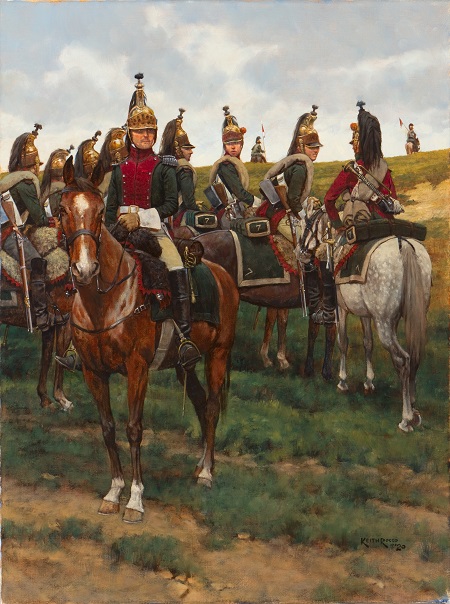7e Dragons, 1815
Description
50 signed and numbered prints
Chef d’escadron Marligne
This regiment was formed in 1814 from the former 7th Dragoons, the 28th Dragoons, and elements of the Grenadiers à Cheval of the Imperial Guard. The merged 7th participated in one of the great cavalry charges at Waterloo, when the entire 3rd Reserve Cavalry Corps charged the British lines. Chef d’escadron Létang of the 7th Dragoons recalled,“… the distance that separated us from the English allowed them to see the movement and they formed in square to receive our charge and resolutely awaited our cavalry, holding their fire until we were at point blank range…. [therefore] the first squadron swung to the right and all the succeeding squadrons followed. The charge missed [the British square] and the squadrons finally rallied around the farm of La Haye-Sainte, still occupied by the British whose fire killed and wounded many of us. General l’Heritier, commanding the division, General Picquet, commanding our Brigade, . . . and two squadron leaders of this regiment were among the wounded.” The regiment began the campaign with 41 officers and 476 other ranks. In total 74 men were lost at Waterloo, including 25 men killed, 11 wounded, 32 men made prisoner, and 6 missing—14% of its starting strength.
In August 1814 an inspection noted that the regiment’s clothing was not made according to the decrees of 19 January and 17 February 1812, nor had the regiment acted upon the decree of 23 April 1814 in removing Imperial symbols and dressing the trumpeters in blue.
Chef d’escadron Marligne is depicted in this painting, his image taken from a portrait. He joined the army in 1788. Three years later he captured 600 Austrians with his company of grenadiers. Marligne served in the 7th bis Hussars during the Egyptian campaign. At Borodino during the 1812 Russian campaign, he charged at the head of the 28th Dragoons and was wounded for the seventh time. He joined the 7th Dragoons in August 1814.
Here he wears a black sheepskin with the campaign housse (saddle blanket) adorned with green mohair lace. Under the Bardin regulations officers were strictly forbidden to wear black sheepskin, but any officer would likely have been reluctant to replace his warm sheepskin with cloth chaperons. Given that the regiment had not acted on the regulations until forced to do so by the Royalist authorities, it is easy to imagine its officers took a pragmatic approach to using the forbidden items for the 1815 campaign.
The dragoons are shown armed with light cavalry musketoons rather than the longer and heavier dragoon musket. To re-arm the dragoons at the start of the Hundred Days, Marshal Louis-Nicolas Davout emptied chasseur and hussar regimental stores of the shorter and lighter musketoons and shoulder belts and issued them to the dragoons.
Additional information
| Medium | |
|---|---|
| Size | 24" x 18", 18" x 14" |
| Type |
Related products
-
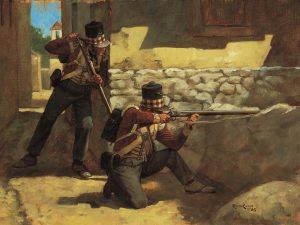
71st Highland Light Infantry
$220.00 Add to cart -
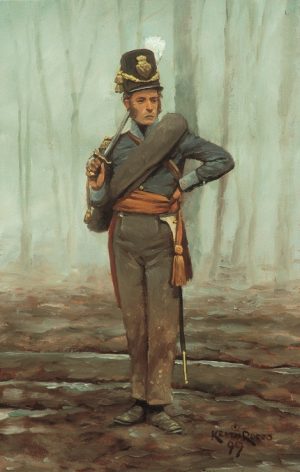
Belgian 7th Line Battalion- 1815 – Original
$1,300.00 Add to cart -
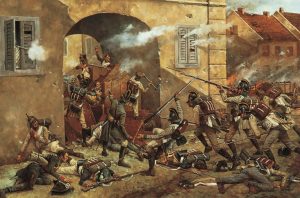
Battle of Aspern, 1809
$345.00 Add to cart -
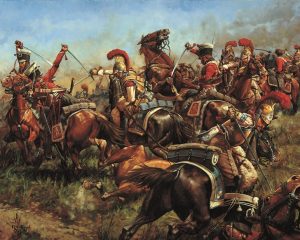
The Melee
$125.00 – $345.00 Select options This product has multiple variants. The options may be chosen on the product page

